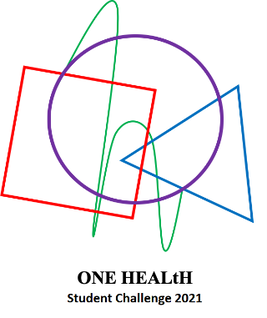2021 One HEALtH Challenge Case Study:
Learning from COVID-19: Building Cross-Generational Connections to Promote Mental Wellness

One Health entails an awareness of the intricate and complex relationships among the many elements that influence human mental and physical health, including human factors (individual, social and cultural determinants), environmental determinants (living arrangements, pollution, geographical features), and interactions with animals (including pets, livestock, and wildlife (even insects)).
This year’s One Health Challenge (OHC) will focus on building cross-generational connections to promote mental wellness among older adults and youth.
Social isolation and loneliness have been described as epidemic among older adults, and represent key risk factors for numerous illnesses, ranging from dementia to heart failure (NAPS, 2020). The systemic neglect and isolation of older adults became abundantly clear during the COVID-19 pandemic. Among older adults, the social distancing rules imposed to contain the spread of COVID-19 triggered or exacerbated feelings of loneliness caused by social isolation (Hartt, 2020), particularly among those who were uncomfortable with, or lacked access to, internet-based communications. Outbreaks of COVID-19 in long-term residential care homes accounted for a great number of deaths, bringing national attention to the underfunding of such facilities, leaving residents, care staff, and their families highly vulnerable. Calls to segregate and further isolate adults who were most vulnerable to the severe consequences of COVID-19 due to age or pre-existing illnesses was even presented by some as a strategy for minimizing the impacts of the virus, highlighting societal willingness to further propagate ageism and marginalize older adults. Such negligence not only undermines the well-being of older adults, but also deprives young people of a connection to their roots, and an appreciation of their place in history and society. Indeed, young people also felt despair and loneliness when they were forced to experience social isolation due to pandemic restrictions.
These outcomes point to a great need to strengthen greater cross-generational connections that promote caring and responsive relationships between older adults and younger generations, and give rise to strategies of inclusion rather than exclusion. There are many factors that might contribute to enabling such relationships. For example, this might occur through changing the design of outdoor spaces to promote positive interactions; this might be different in rural versus urban communities. It might entail interventions that build on shared interests and values, such as a love for animals. It might be accomplished through the design of internet applications that are appropriate for both older and younger adults, or by creating tools, resources, and virtual conditions that enable mutually beneficial interactions.
Your challenge is to integrate perspectives from multiple disciplines to design an intervention (an application, program, tool, product, or strategy) that brings together the generations of younger and older adults in a manner that is mutually beneficial and sustainable, and is appropriate under the restrictions that exist to minimize the spread of viruses, such as COVID-19. Each team should explore factors that might emanate from technology, human behaviour, environmental context, and even the possible role of animals and nature. The intervention would take into consideration communications to gain buy-in from all involved, and the policies and infrastructure that might be needed to support the intervention to promote positive cross-generational relationships.
To accomplish consideration of these multiple elements, your team will need to connect with young and older adults to discuss your ideas, along with others who might play a role (family members, care staff, health practitioners, relevant not-for-profits etc.). Your intervention must be actionable, taking into consideration the range of realities that exist for younger and older adults in a COVID-19 world.
Although the focus must be on solutions that promote social connections and mental wellness, there are many gateways that you might consider.
For example, you might consider:
- Mental health issues (trauma, anxiety, depression, loneliness, grief)
- Physical health (physical activity, diet, heart disease)
- Technological applications and mobile devices (social media, web based applications)
- Urban planning and design, including public or social spaces
- Human-centred product and process design
- Positive psychology (human-environment relationship, social support)
- Public health guidelines (COVID-19 restrictions)
- Integrated services (public health services)
- Media communications to promote buy-in
- Poverty
- Underlying factors associated with ageism
- Youth wellness
- Caregiving and policies regarding care of older adults
- Healthcare policies and finances
- Community-based research methods and consultation processes
- Much more!
These gateways demonstrate how multiple issues might be intertwined in the development of any solution. Thus, each team must consider multiple disciplinary perspectives to design an intervention that brings together the generations of younger and older adults.
2021 Challenge Resources:
